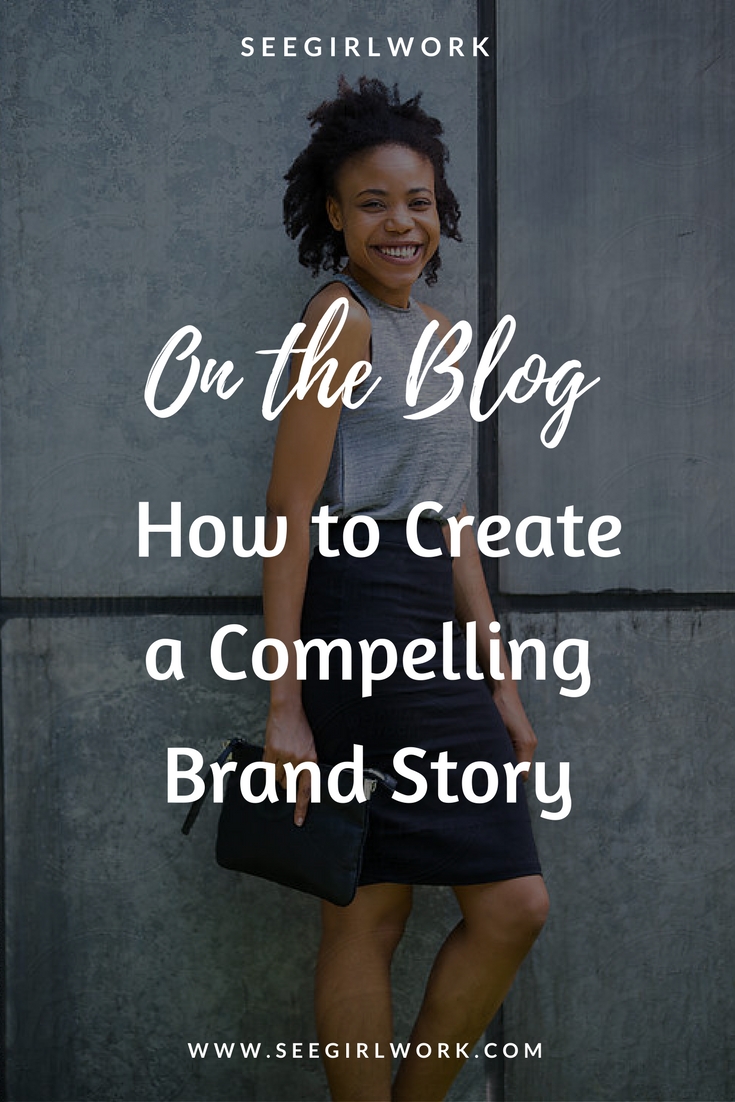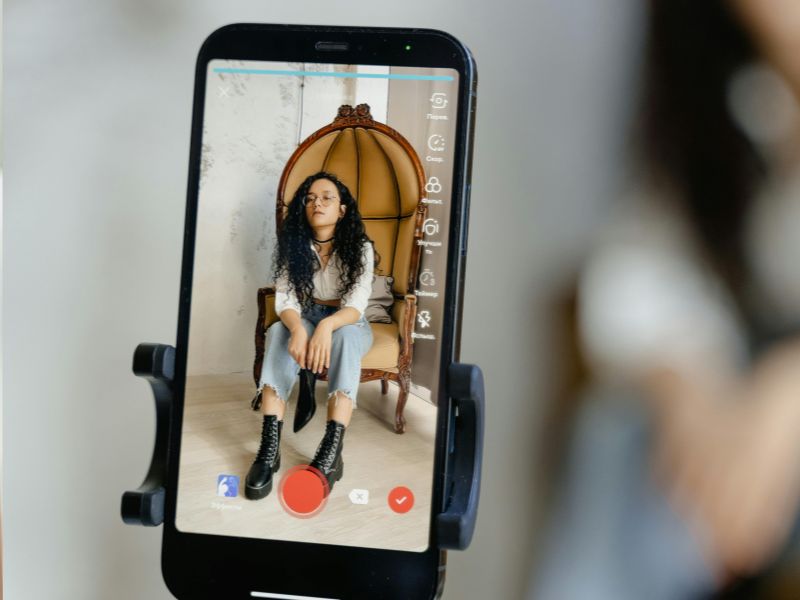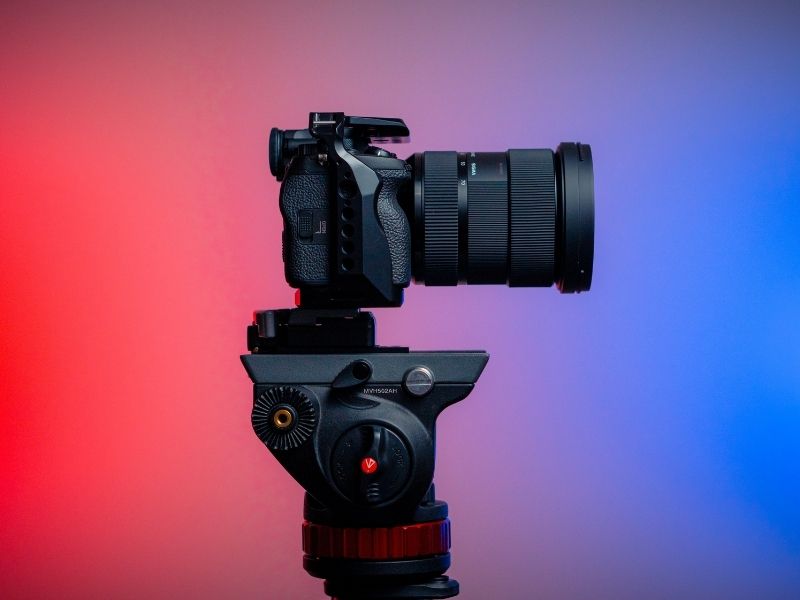
6 Steps to Creating a Compelling Brand Story
Storytelling can seem a little intangible, but there are practical steps that you can take to build a brand story into your business.
Brand storytelling has the power to change the way we do business as well as market our products and services.
But it’s important to know how to tell your brand story and determine the best methods and channels that will really work best in amplifying your story. Even the most organic brands need intention and care if they are to going to resonate with their ideal audience.
Great brand stories don’t just happen overnight. At least not for me it didn’t. It wasn’t until this year that I’ve been able to articulate exactly what See Girl Work is, how it came about and why it continues to drive me to create content and seek out new opportunities for our audience.
In fact, I recently updated our About page with more of the See Girl Work brand story. I can tell you within a week of making those changes, I had an inbox full of pitches from PR companies, marketing agencies, book publishers and other companies looking for product placement on the blog.
This is a far cry from earlier this year when I’d get a few email pitches a month. After updating our About page, I started receiving the same amount of pitch emails in just one week!
This experience reaffirmed to me that if you’re able to hone in on what your brand story is, but also craft it and package it, the right people will find you.
Storytelling can seem a little intangible, but there are practical steps that you can take to build a story into your business.
Below I’ve jointed down a few ideas on how to tell your brand story.
1. Why Did You Start Your Business?
Not every great idea makes a good business. Not every hobbyist wants to be a small business owner.
If you had a great idea for something or enjoyed working on a hobby or craft, what made you think it would be a good business? Thinking about this “why” is a great place to start in telling your brand story.
On those dark days when your bank account hits zero, the phone stops ringing and your inbox is empty with not even one new client inquiry, knowing your “why” is going to be the thing that keeps you going and what’s going to build your perseverance.
Reflecting on why you started your business should be the starting point of telling your brand story.
2. What Problem Are You Solving?
Knowing the problem that your business is helping to solve is crucial for your business profits. Not only from a storytelling perspective but for your bottom line.
Knowing the problem that you’re solving trickles down from your business plan to your marketing plan and every touch point of your product lifecycle and customer journey.
If you’re not adding value to your industry, then you might not be in business for very long.
In the context of brand storytelling, knowing the problem that you are solving is also crucial. You should be able to seamlessly weave in the benefits of your business into your business story.
In the beginning, you would have already created a unique selling proposition (USP). Ensure that it’s a part of your storytelling and each customer touch point.
3. Who Do You Help?
When we get immersed in the business of running a business, we can sometimes forget who we’re meant to be serving. We forget or fail to understand how our customers are experiencing our services or products.
But helping our clients or serving our customers is key to being in business. It should also be a key component of our brand story.
At See Girl Work, our brand is aimed at “entrepreneurial-minded women.” Our audience is baked into every facet of what we create, publish, record, post, pin or share in any other way.
Whether you’re a blogger or service provider, keep your audience in mind when developing your brand story. They’re the ones you want to listen so you’re storytelling has to capture their attention.
4. How Are You Going to Help Them?
Of course, your product or service should be at the heart of your brand storytelling. If you’re a photographer, designer, writer or fashion stylist, you should be able to communicate what is that you’re bringing to the table.
When you can take a step back and start to understand your business, your customers, your place in the market and what makes your offering so unique, your brand story will begin to reveal itself and become crystal clear.
5. When is Your Timeline?
My favourite stories are those that are told in a sequential order. There is a beginning, a middle and a next step over. It’s beneficial to think about the steps you took, the process or the in order in which your story can unfold.
When you think about the order of your story, you’re able to showcase the growth stages of your business.
This could be a great way to reward customers that have been with you “since the beginning” or in celebrating milestone achievements such as your 100th customer or 500th subscriber.
It helps to give your story a sequence—like chapters in a book. Everybody loves a good page-turner.
It also helps to be consistent in your storytelling. Your story shouldn’t be different depending on where it’s consumed from. Think of like a good joke – 10 different people can tell a good joke, in different languages, using different words, but the hook (the climax that makes you laugh) is always the same.
100 people should be able to tell your brand story in the same way.
6. Where Does Your Business Exist?
Are you online? On the right social media channels? Are you guest posting on other high ranking blogs? Are you in the press? Do you attend the right networking events?
Take a step back and scrutinize every single website, blog, screen, page, video, comment, post or piece of paper that carries your brand. It could be your business logo as a profile image on Facebook, it could be a visual graphic on Pinterest, it could be a recent blog post that you published or it could be the recent comment you left on someone else’s LinkedIn post.
When you look at all these things, are they telling your brand story?
Evaluate your website, social media, imagery, design, packaging and ask yourself if each one of these elements tell the story of your brand as you want it to be shared. Your brand items need to tell your brand story even when you’re not in the room. Your brand should be able to do the talking for you.
Your brand items need to tell your brand story even when you’re not in the room. Your brand should be able to do the talking for you.
The Take-Away
It’s normal to get a little overwhelmed thinking through all of the elements and self-reflection that’s necessary in order to communicate your brand message. But it’s a worthwhile process that will elevate your business and make it better.
Remember, our brand is not only about logos, colour schemes, and design—it’s about how well we communicate with our clients, customers or stakeholders.
It’s about what kind of story we can tell with our brand that will separate you from your competitors.
Image via Bo Bo on Stocksy





Leave a Reply
You must be logged in to post a comment.